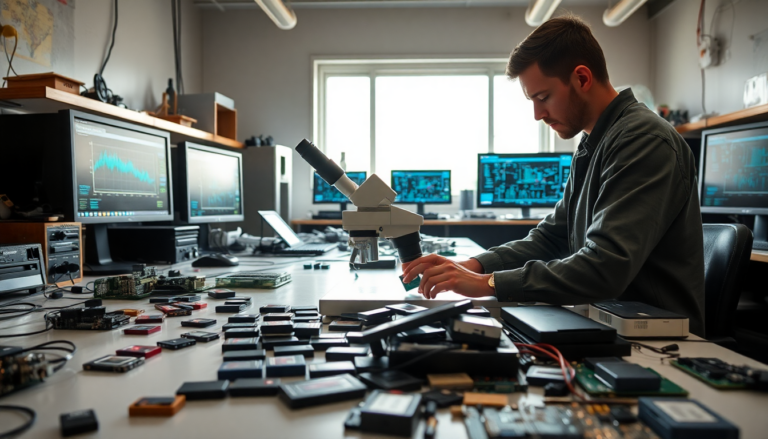Argomenti trattati
In a surprising twist, a group of console hackers has managed to recover data from discarded Nintendo SD cards that many believed were lost for good. These SD cards, originally used during the factory setup of Wii and Wii U systems, contained boot images essential for the consoles to operate properly. What started as a straightforward recovery effort quickly turned into a complex journey filled with technical hurdles and unexpected discoveries. Let’s dive into the recovery efforts, the exploits that emerged from this process, and what it all means for the gaming community.
Understanding the Recovery Process
The recovery operation was led by a console hacker known as WinCurious. After acquiring discarded cards from a Nintendo factory, they discovered that many were damaged—about 25% were completely destroyed, with their die and flash memory integrated circuits (ICs) beyond repair. However, the remaining cards mainly suffered from printed circuit board (PCB) damage. Some required painstaking resoldering, while others needed just a few minor tweaks to become readable.
Next came the challenge of extracting the data from these SD cards. Simply connecting them to a standard reader didn’t work due to the extent of the damage. WinCurious proposed an innovative solution: using a compatible donor SD card and swapping its NAND chip with a TSOP 48 clip. This workaround was not only labor-intensive but also demanded a high level of precision in soldering, as the clips tended to melt at lower temperatures, complicating the process even further. The intricacies of this operation are not to be underestimated; soldering these clips onto the PCBs required both skill and patience, often necessitating specialized tools like infrared preheaters.
Unveiling the Exploit
After successfully recovering 14 SD cards, the team began sifting through the dumped data. Among their findings was an SDBoot1 image, a vulnerability first identified during the Wii U’s factory setup. This discovery allowed the group to create an exploit, cleverly named “paid the beak,” which they later shared on GitHub. Impressively, SDBoot1 proved versatile, working even on consoles with empty flash memory, and providing a lifeline to nearly any Wii U grappling with software brick issues.
However, it’s essential to note that this exploit does have its limitations. It can’t help consoles that are suffering from hardware failures or Seeprom-related issues. For a successful recovery, users still need to utilize a rare Nintendo jig or similar devices, such as a Raspberry Pi Pico, to kick-start the boot process from the SD card. This technical requirement adds a layer of complexity for users eager to revive their consoles.
Implications for the Gaming Community
The implications of these findings go far beyond mere recovery efforts. For many gaming enthusiasts, the availability of such exploits allows for a deeper interaction with older hardware, enabling a wider audience to experiment without needing extensive technical skills or the need to disassemble their consoles. Another mod chip, known as de_Fuse, offers a similar opportunity, allowing recovery from Seeprom failures but requiring a more advanced understanding of the underlying technology.
As the gaming community continues to explore the potential of these recovered SD cards and the exploits derived from them, this journey underscores the importance of preservation and innovation within the realm of retro gaming. The successful navigation of this complex recovery process is a testament to the resourcefulness of the hacker community and their unwavering dedication to keeping legacy systems alive. Isn’t it remarkable how a bit of ingenuity can breathe new life into technology that many thought was dead?

